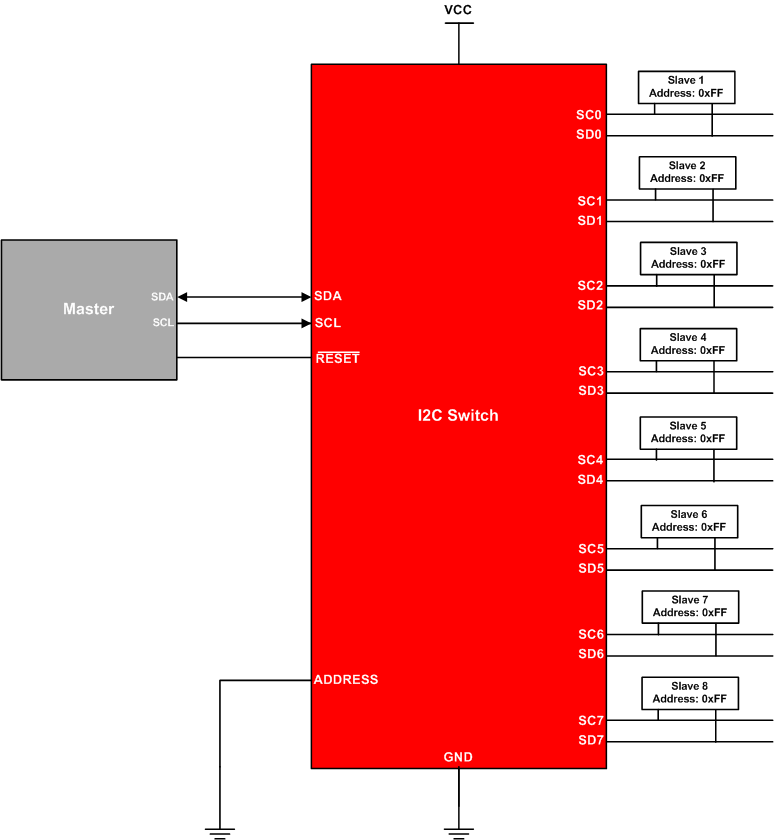SLVA787 September 2016 LM8330 , LM8335 , P82B715 , P82B96 , PCA6107 , PCA9306 , PCA9306-Q1 , PCA9515A , PCA9515B , PCA9518 , PCA9534 , PCA9534A , PCA9535 , PCA9536 , PCA9538 , PCA9539 , PCA9543A , PCA9544A , PCA9545A , PCA9546A , PCA9548A , PCA9554 , PCA9554A , PCA9555 , PCA9557 , PCF8574 , PCF8574A , PCF8575 , PCF8575C , TCA4311A , TCA6408A , TCA6416A , TCA6418E , TCA6424A , TCA9509 , TCA9517 , TCA9517A , TCA9534 , TCA9534A , TCA9535 , TCA9538 , TCA9539 , TCA9539-Q1 , TCA9543A , TCA9544A , TCA9545A , TCA9546A , TCA9548A , TCA9554 , TCA9554A , TCA9555 , TCA9617A , TCA9617B , TCA9800 , TCA9801 , TCA9802 , TCA9803
3 I2C Switches
I2C switches are slave devices controlled by the I2C bus that fans out multiple I2C channels to enable more control over your bus.
Applications with slave devices that share the same address can use an I2C switch to prevent slave address conflicts. By having the same slave address, the I2C master will be unable to tell which slave device it is speaking to and most importantly, may communicate commands to the wrong slave device. A solution is to incorporate an I2C switch (Figure 4 and Figure 5). An I2C switch has the capability of isolating slave devices with the same addresses to prevent corruption.
Switches are also used to isolate portions of an I2C bus which have legacy slave devices that cannot handle higher speed bus transactions. Also switches can be used to turn off portions of the bus which are not powered constantly, or are shut down temporarily, to save power.
A common misconception about I2C switches is that they are often confused as a multiplexer. The difference between a switch and multiplexer is that a multiplexer utilizes a selection bit to enable a specific channel while a switch can enable one or many channels.
 Figure 4. I2C bus with multiple slave devices with the same address
Figure 4. I2C bus with multiple slave devices with the same address  Figure 5. Eight-Channel I2C Switch Example
Figure 5. Eight-Channel I2C Switch Example